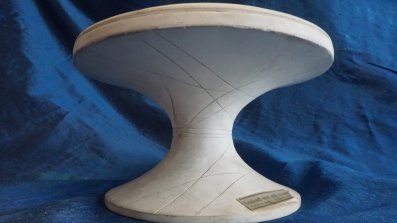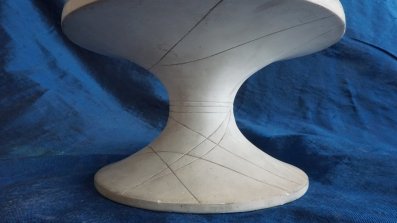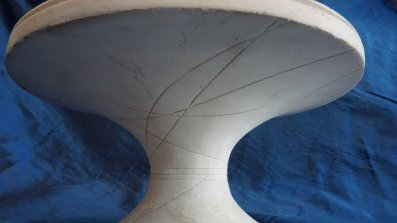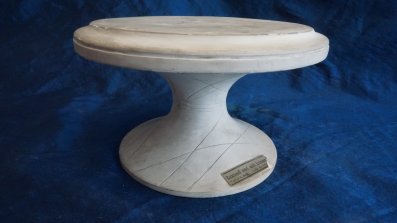Catenoid
Model II 3d represents a catenoid - a surface of revolution, generated by rotating a catenary curve about an axis. More concretely, a catenoid is defined by rotating the curve $z = a \cosh(x/a)$ about the $z$ axis. Catenoids are the only type of minimal surface (with constant zero mean curvature) which are also surfaces of revolution, other than planes (a degenerate case).
Catenary curves are themselves very interesting, and appear in art and many real-world scenarios. Some of Gaudi's work makes use of catenary curves, amongst other geometric concepts. A hanging cable suspended between two points forms a catenary curve, and catenaries are in fact utilised (most likely without knowing it) for building igloos [1]. Such a curve can in fact be constructed by rolling a parabola along a fixed line, and tracing the points through which its focus passes - this is similar to the constructions outlined for the other surfaces in Constant Mean Curvature. Catenoids themselves provide interesting shapes for construction, such as this catenoid-inspired pavillion.
Catenoids can also be realised with soap films. Soap films naturally try to minimise their mean curvature, and give rise to lots of beautiful surfaces. See here a soap version of a catenoid (and from another angle), from this interesting article. An interactive catenoid, along with a collection of other fun minimal surfaces, is available on Professor Robert Vanderbei's webpage.
On model II 3d there are three geodesics, and a curve asymptotic to the horizontal line of curvature in the centre (i.e. getting closer and closer as you go further along the line).
References
[1] R.L. Handy, The Igloo and the Natural Bridge as Ultimate Structures, http://pubs.aina.ucalgary.ca/arctic/Arctic26-4-276.pdf








